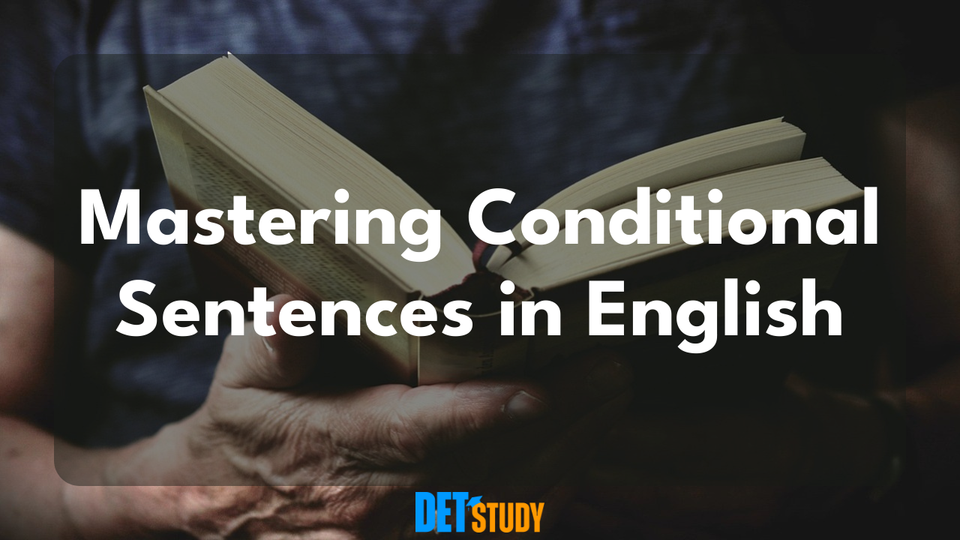精通高级条件句:句首“Had”的精妙用法

精通过去完成时:一份综合指南
理解过去完成时
过去完成时描述的是在另一个过去事件发生之前已经完成的动作。它由“had” + 过去分词构成,对于事件排序或表示一个动作在另一个动作开始之前就已完成至关重要。🕰️
Duolingo English Test 有效口语策略结构
- 主语 + had + 过去分词
范例
-
She had finished her work before the meeting started. - 她的工作在会议开始前已完成。
-
By the time we arrived, the movie had already begun. - 电影在我们抵达前已经开始。
-
They had eaten by the time we called them. - 吃饭在电话打来前已完成。
用法及更多范例
这种时态对于叙述故事或事件顺序很重要的时间线至关重要。例如,“When Sarah entered the room, everyone had already left”表明莎拉迟到了,因为其他人提前离开了。另一个例子:“I had visited that museum once before it closed down”,表示参观发生在博物馆关闭之前。🏛️
练习句
- Before they reached the destination, they had lost their way.
- Had you finished your homework before she arrived?
掌握过去完成时能够通过阐明过去事件的顺序来增强沟通,使您的叙述更加精确。✨
句子中“Had”的用法示例
“had”在过去完成时中至关重要,它表示在另一个事件之前完成的动作。以下示例展示了它的用法:
-
Had you ever been to Italy before your trip last summer? - 询问过去旅行之前的一次经历。
-
They had completed the project before the deadline. - 项目提前完成。
-
She realized she had left her phone at home after she arrived at the office. - 离开手机发生在意识到之前。
-
John had cooked dinner before his guests arrived. - 晚餐在客人到来前已准备好。
这些示例突出了“had”在事件排序和标记相对于其他过去事件的早期完成方面的作用。
使用“Had”的常见错误
在使用过去完成时中的“had”时,请避免以下常见错误:
用“Had”代替“Have”或“Has”
“Had”用于完全在过去完成,且在另一个过去动作之前的动作。不用于与现在相关的动作。
- Incorrect: She had finished her homework so she is going out now.
- Correct: She has finished her homework so she is going out now.
在顺序已明确时过度使用“Had”
当事件顺序无需“had”也清晰时,请避免使用它。
- Incorrect: After I had eaten breakfast, I left for school.
- Correct: After I ate breakfast, I left for school.
在疑问句中错误放置“Had”
在过去完成时疑问句中,“had”位于主语之前。
- Incorrect: Did you had finished the report before the meeting?
- Correct: Had you finished the report before the meeting?
将过去完成时与暗示简单过去的特定时间短语一起使用
不要将“had”与“last year”等短语一起使用。
- Incorrect: I had met him last year.
- Correct: I met him last year.
在两个过去动作中忘记使用“Had”
使用“had”来强调一个发生在另一个过去动作*之前*的动作,尤其当这两个动作都在同一个句子中时。
- Incorrect: She was happy because she received the letter.
- Correct: She was happy because she had received the letter.

在条件句中省略“Had”
在过去条件句(假设情况)中,“had”至关重要。
- Incorrect: If I knew you were coming, I would have waited.
- Correct: If I had known you were coming, I would have waited.
通过注意这些错误,您可以更有效地使用“had”来实现更清晰的沟通。✅
何时使用以“Had”开头的句子
以“had”开头句子在过去完成时结构中很常见,通常用于强调或设定一个过去的条件。
在条件句中设定条件
这在表示非真实过去情况的第三类条件句中很典型:
- Example: Had I known about the meeting, I would have attended.
强调事件的顺序
为了强调一个事件发生在另一个过去事件之前:
- Example: Had they checked the weather forecast, they wouldn’t have been surprised by the storm.
使用倒装句以达到文学或正式效果
在正式写作中,倒装(将“had”置于主语之前)可以增加强调或戏剧效果:
- Example: Had the explorers not turned back, they might have discovered the island first.
强调过去的遗憾或错失的机会
当反思错失的机会时,以“had”开头可以突出强调这个机会:
- Example: Had I invested in that company, I would be wealthy now.
以“had”开头的句子通过阐明过去的语境或未实现的机会来增加深度。✍️
掌握练习
这些练习有助于巩固您对以“had”开头句子的理解,尤其是在条件句或正式语境中。
练习 1:条件句
例如,“If they had known about the sale, they would have bought the sofa”变为:Had they known about the sale, they would have bought the sofa.
Free Test Questions练习 2:事件顺序
为了强调顺序,“They did not miss the bus because they woke up early”变为:Had they not woken up early, they would have missed the bus.
练习 3:遗憾或错失的机会
表达遗憾,“If I invested in real estate earlier, I would be richer now”变为:Had I invested in real estate earlier, I would be richer now.
练习 4:正式或戏剧性强调
为了达到正式效果,“The merger would have succeeded if the companies collaborated more effectively”变为:Had the companies collaborated more effectively, the merger would have succeeded.
练习这些有助于您理解以“had”开头的句子如何改变语气和含义,尤其对于非真实的过去条件。💡
DET Study 提供超过 15,000 道练习题的广泛套件,专注于利用形容词和副词来强化您的语法技能。定期使用这些有针对性的材料进行练习,确保您以增强的信心和精确度应对 Duolingo English Test,准备好取得您理想的成绩。
🎯 需要更多练习?访问 DETStudy.com,获取专家资源、超过 15,000 道练习题,以及由 AI 驱动的写作和口语反馈。

